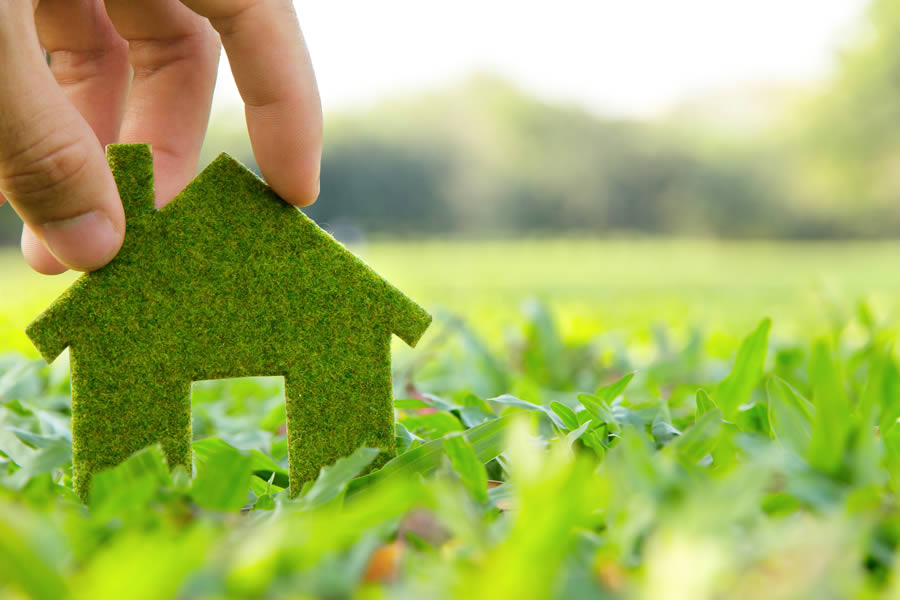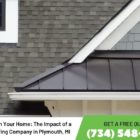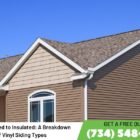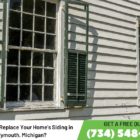When the phrase “green living” is tossed around, homeowners are often intrigued. Green living is trending with more homes being constructed and remodeled with a variety of eco-friendly designs and components. Roofing options are no exception. However, green roofing models can go far beyond using materials that improve energy-efficiency and use environmentally friendly elements. A green roof can actually be a living roof. Just as landscape needs vary according to geography and local climate conditions, a Plymouth, Michigan roofing project that involves a living, green roof will have certain maintenance requirements.

The Technology: Modern green roofing systems offer a variety of options that are adaptable according to a project’s size, performance requirements, budget and maintenance expectations. Variables include choices that affect elements like drainage systems and plant medium. A living roof is, in essence, a system of trays custom tailored to a particular roof’s design needs. Underlying the trays are several layers of specialized fabric for protection, water retention and filtration. As the vegetation thrives, the structure enjoys benefits like:
- Expansion of roof life
- Reduction in energy demand
- Better stormwater management
- Reduction of “heat island” effect
- Noise reduction
- Better air quality.
As a living architectural system, the following routine maintenance is required:
1. Irrigation Plan: Plymouth, Michigan enjoys an average of more than 175 sunny days every year. The area also receives about 34 inches of rainfall every year. These are great conditions for a living roof that features drought resistant vegetation. However, there will still be a need to supplement water requirements at times. Smart drip irrigation systems equipped with sensors to detect moisture level within the plant medium will activate on demand, keeping a green roof lush throughout the spring and summer months and root systems alive and well during fall and winter as foliage lies dormant.
2. Invasion: Like any garden, such prime growing conditions will also make a living roof attractive to invasive plant species. Use of traditional herbicides is not recommended because the chemicals could have a damaging effect on underlying protective membranes and fabrics. The good news, however, is, by being rooftop, the elevation prevents most invasive species from arriving in the first place. Also, most green roofs feature a shallow soil system which is unfavorable for most plant species. Routine inspection and maintenance annually should include removal of any suspect plant species that do not belong. In other words, a project of good, old-fashioned weeding of your rooftop garden.
3. Fertilizing: Green roofing systems use a natural design where plants eventually build-up enough organic matter within soil medium to create cycles of dead plant matter decaying to rejuvenate the living matter. It does, however, take time for a roof to mature and become self-fertilizing. Manual fertilization annually is usually required for about the first two years.
4. Leak Detection: As a modular system, living roofs can easily have a panel lifted for inspection, repair or replacement. That being said, valuable time and effort can be saved by having a leak detection system installed to quickly find the panel that is the source of a drainage problem. This makes it more efficient for annual inspections to identify and resolve potential problems so drainage back-ups and pooling can be prevented to begin with.
FAQ: When a homeowner realizes that regular maintenance is not complicated, they usually become more interested in the advantages of a green roofing system. This leads to common questions. Here are the answers to some of the most frequently asked questions by homeowners considering replacing a traditional roof with a living system:
- Can I replace my traditional roof with a green roof? Yes. However, it will require a structural engineer to determine that your current roof can bear the load. An inspection of your roof’s current waterproofing material will also determine whether it needs to be replaced or not.
- Can a sloped roof support a green roof? There are design options which make this possible. However, a steeper slope will usually increase cost. Your roofing professional can provide you with more information on your options.
- Are there government incentives that can help offset costs? The EPA and the State of Michigan offer various opportunities to help offset some of the cost for green projects. Ask your local roofing expert about federal and state tax credits your project may qualify for.
- Can I grow a food crop on my green roof? Drought tolerant crops, like thyme and rosemary, do well. And they smell fantastic. The two most important considerations for choosing vegetation are drought-tolerance and a shallow root system that can thrive in soil media with a depth of 4 inches or less.
- What happens during a harsh Michigan winter? The technology being used in American living roofs are adaptations of technology that has been used throughout Europe for centuries. German designs are the particular evolution most commonly implemented in modern green roof systems. There is solid science to address the stresses vegetation must adapt to in the harsh conditions of a Michigan winter. What kills plants in a harsh winter is less related to the temperature than to the drying effects of wind. The key to keeping a living roof alive through a Michigan winter is to choose vegetation with minimal leaf area and keep root systems moist with active irrigation when temperatures are above freezing.
Growing Popularity: Although it may seem outlandish to think of a crop of rosemary growing atop your home, the truth is that living, green roofs are becoming more and more popular. Last year San Francisco became the first city in the U.S. to require new building construction to feature green roof design. That means about 15-20% of the roof space in San Francisco will become living architecture. And San Francisco is not alone. In the US, 25 cities are supporting green roof systems, providing various incentives to promote eco-friendly building designs. Last year about 7-8 million square meters of living roofing architecture was installed throughout the country. To get started on your own green roofing project, please contact us. Our roofing experts can make that green dream a reality.










